The Collage
Apr 08, 2022Creating New Meanings. Envisioning Dimensions. Learning Through Art Tools.
Explore the power of collage as a technique to visualise 3D designs on a 2D platform
During the EMC Advanced class, one important element of the final examination for our students is interpreting an art piece, painting, into a floral design. This involves a group trip to Paris, visiting the Louvre Museum to choose and experience live a painting of each student's choice which later they get to present in their work of floral design. It's not only an exciting trip and an amazing experience, but it is mostly a challenge that involves knowledge of the elements and principles of design as well as introspection, research, planning and execution.
An important part of the process in this endeavour is the COLLAGE. At EMC we use the collage not as a form of art in itself, but rather as a tool to better understand the relation between 2D representation (of the chosen painting to interpret) and 3D representation which becomes a challenge in the floral design work. However, before understanding how the collage works as a tool, it makes sense to understand its background as a form of art. Inspiration from art is undoubtedly a huge part of floral design work in general and it most certainly works better if the designer knows and understands it.
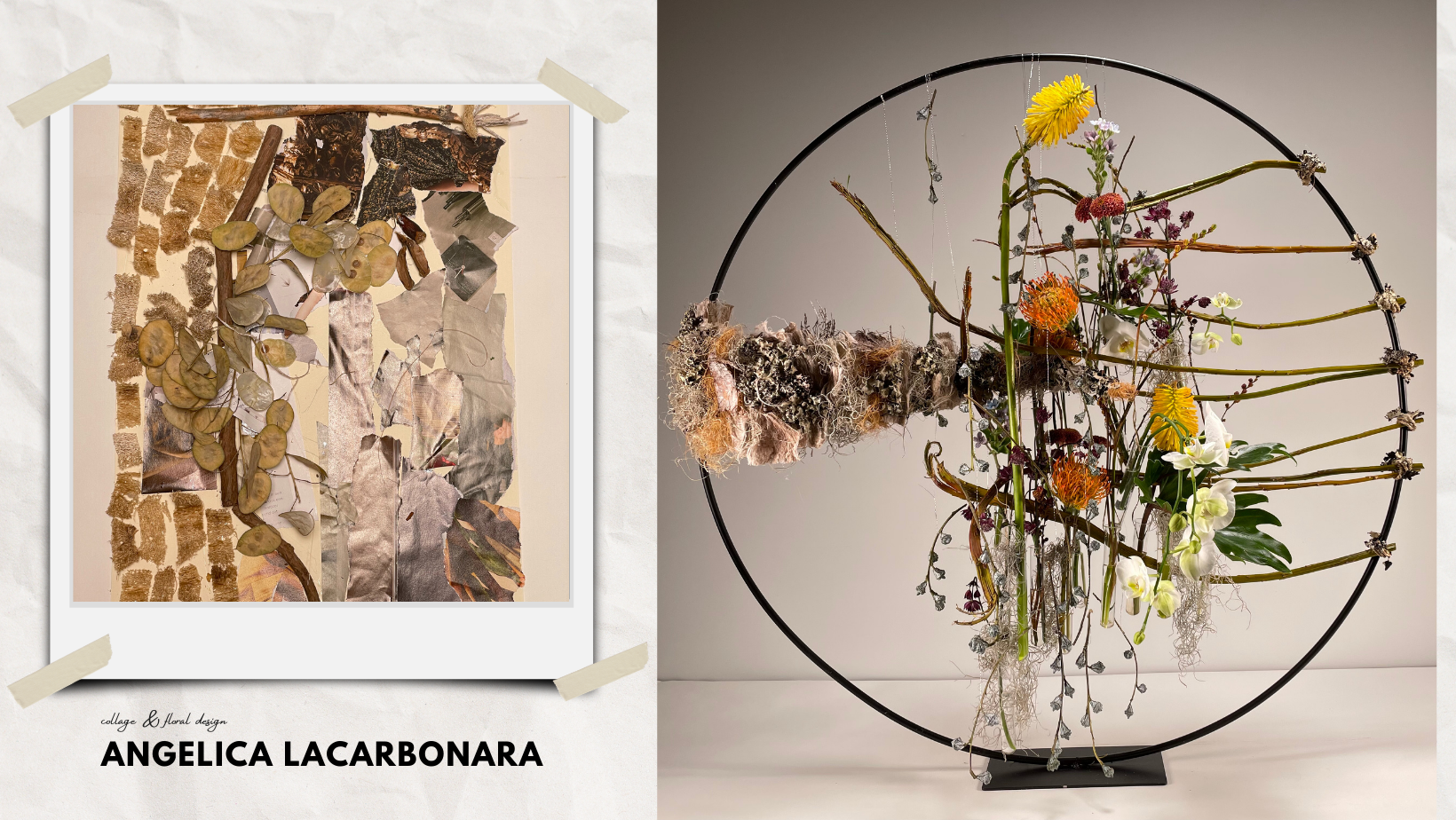
Precursors of Collage Art
The techniques associated with Collage Art were first used in China around 200 BC when paper was invented. The initial style of collage gradually began to come into fashion within 10th century Japan when calligraphers started to using glued paper and texts on surfaces when writing poetry. During the 15th and 16th centuries within Europe, collage techniques were used in Gothic cathedrals when applying gold leaf panels, as well as gemstones and other valuable metals that were applied to religious imagery and icons.
Collage was also seen as a method of art undertaken by hobbyists for a period of time, as this style was used in items of memorabilia, such as photo albums, and books within the 19th century. However, many institutions attributed the history of collage and its official beginning within the art sphere to be dated around 1912, when both Picasso and Braque, two of the most important artists of the time, began to experiment with this style in their artworks.
Cultural Context
Becoming a distinctive part of Modern Art in the early 20th century, Collage Art described the technique of assemblage that was used within this artistic creation of a new style. Despite the roots of Collage Art being traced back hundreds of years, this art form made a dramatic resurgence and was said to exist as an art form of novelty due to its one-of-a-kind aesthetic. Starting in the Modernist period, before being propelled into the contemporary art world, Collage Art has endured many changes as more artists began to explore it.
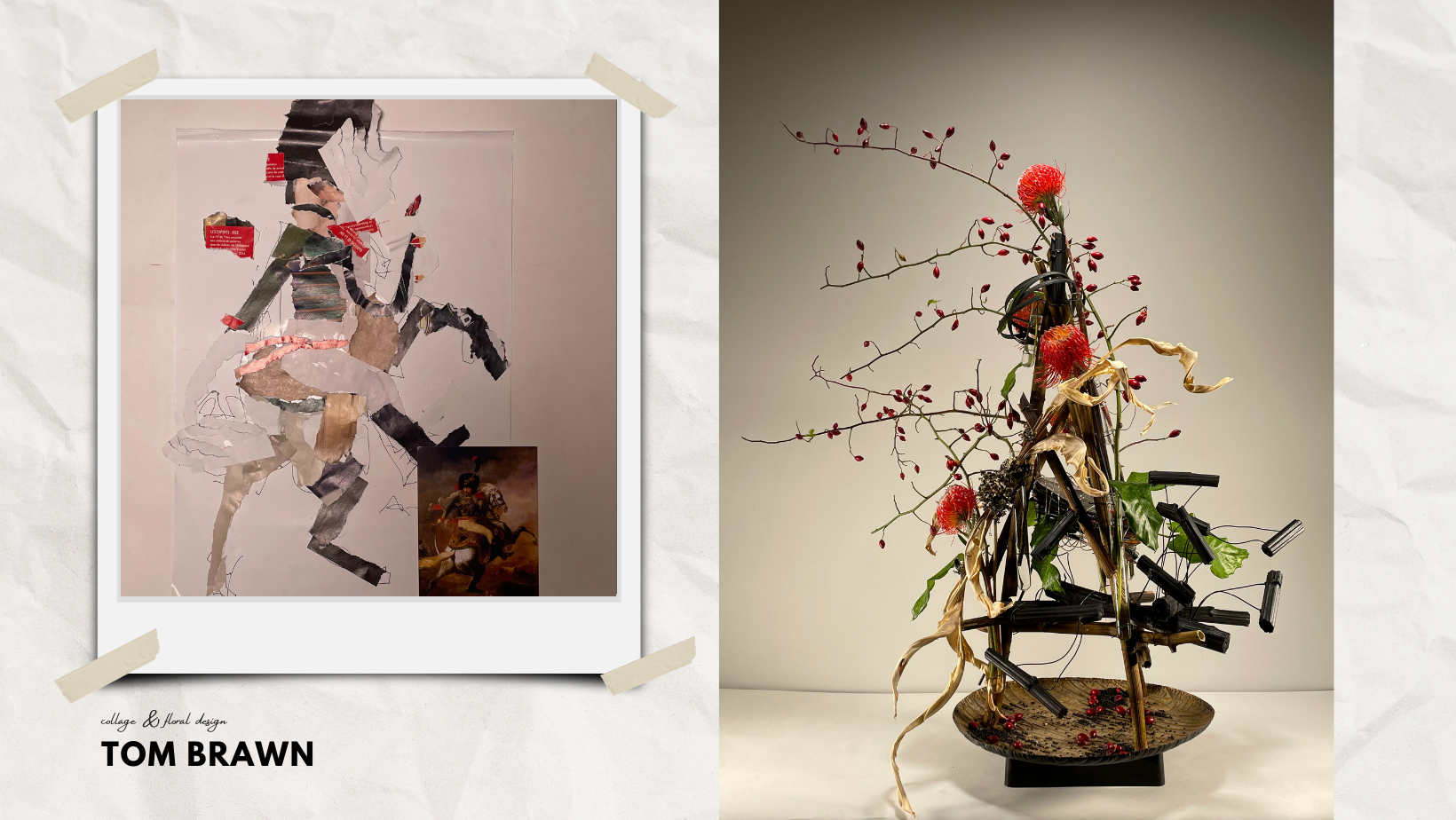
Taken from the French word coller, which means to either stick together or glue, the term “collage” described the process that was taken when creating Collage Art. Collage within art was first coined by Cubist artists Georges Braque and Pablo Picasso, who were the first pioneers of this movement. Existing as the first two artists who worked with different mediums in an attempt to make art, Braque and Picasso began their cutting-edge assemblages around 1910.
The first example of Collage Art appeared within Braque’s 1912 artwork titled Fruit Dish and Glass, where he glued down imitation wood-grained wallpaper. Following in Braque’s footsteps, Picasso began to add newsprint to his oil paintings which made reference to the current events that were taking place, as well as gluing rope around the edge of some canvases. Pioneers of the Collage Art movement, both Braque and Picasso composed their works from glued bits of coloured paper, newspaper, and found objects.
A variety of materials, such as paper, cloth, paint, found objects, magazine and newspaper clippings, and sections of other artworks and text were incorporated together before being glued onto a canvas or board to create an entirely new composition. This style essentially brought forth the production of a different form of art, which allowed new types of artworks to be created. These materials were considered to be such a bold intermingling of artistic elements that the return of the collage medium was thought to revolutionise modern art.
Collage as a form of Art
Collage Art has been referred to as one form of mixed media art, as many different types exist. The process of collage was viewed as a mixture of both elevated and diminished elements that existed within formal art, with this mixture referring to the traditional definition of art as well as art that was produced for mass consumption and commercial use. Thus, Collage Art existed as a newer form of Modern art due to its combination of elements, which saw many artists employing this popular medium.
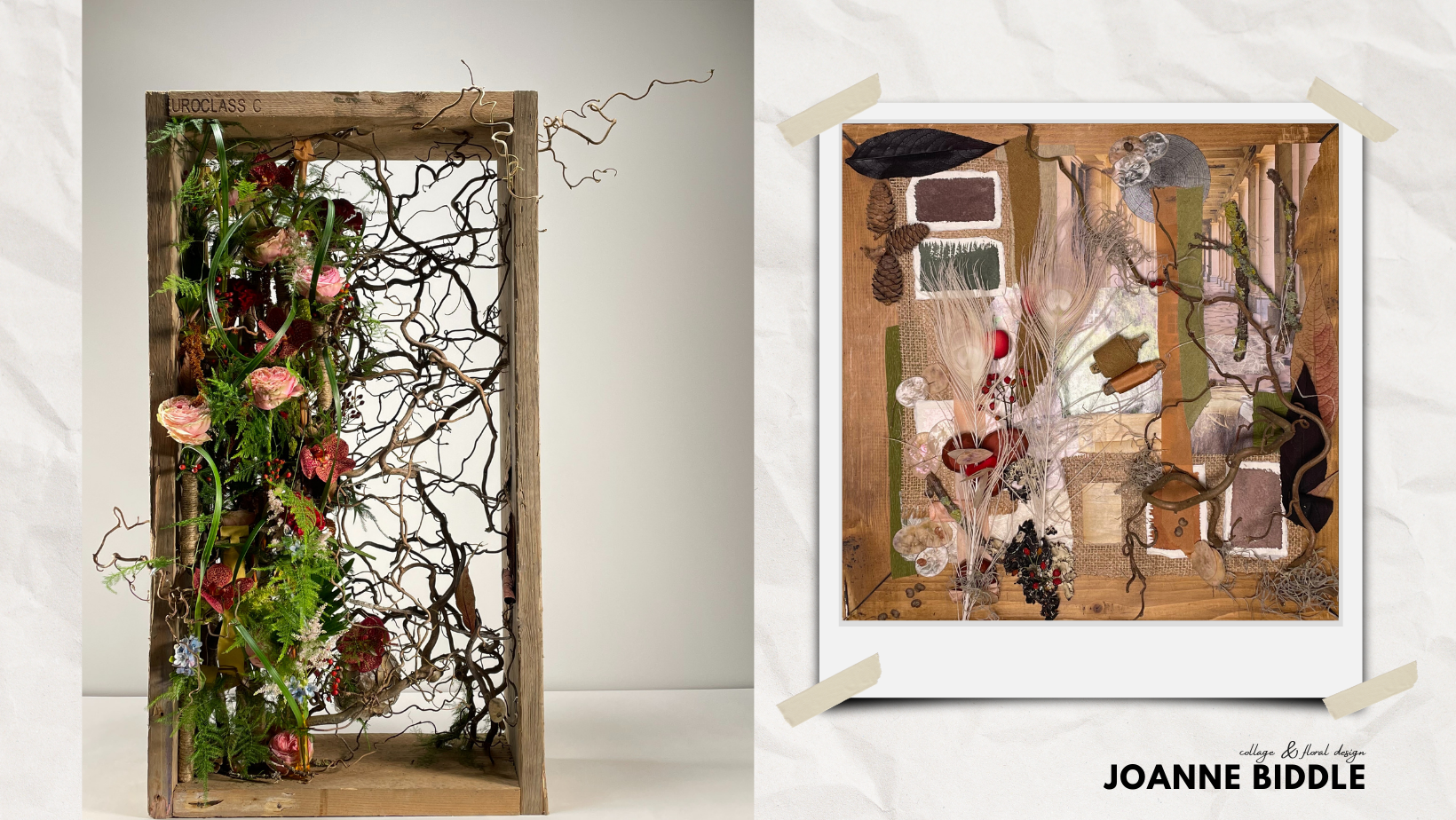
Through incorporating a variety of materials within an artwork, Collage Art successfully subverted traditional definitions of what was important art. The incorporation of these materials allowed collage artwork to frankly question society’s tendency to detach fine art from ordinary objects through juxtaposing elements of high and low culture within works. Whether these compositions were purposeful or random, the comparison created by the contrast of different elements has long captivated the attention of artists.
Since images have the ability to take on new meanings within different contexts, the art of collage was able to easily overturn traditional meanings that were typically associated with art, as well as imply multiple meanings simultaneously. In doing so, Collage Art created works that did not simply fit into a single and rigid analysis. The style of collage held much artistic potential, which in turn made the movement incredibly accessible for all types of artists, including floral designers.
Collage and Floral Art
Collage practices—the gathering of materials from different worlds into a single composition demands a sort of a double reading of each element involved in the original work of art chosen to be interpreted. Collage depends upon a new kind of relationship between the bi dimensional representation of the original and the 3D floral design that is undergoing. The shapes, the forms, the light source, the distribution of elements and colour palette are viewed through the collage in a completely new perspective, respecting the disposition on the original canvas, yet allowing the student to perceive the future alignment and cohesiveness of them in the floral design.
Analysing the way the artist displaced the characters in the composition of the painting gives an accurate future placement of the floral elements, respecting the overall display or even giving it a new meaning. Creating a construction to ensure this disposition of elements suddenly becomes a more conscious process, where each step of the way the student realises how and why certain points are important for support, not just for aesthetic reasons and so on.
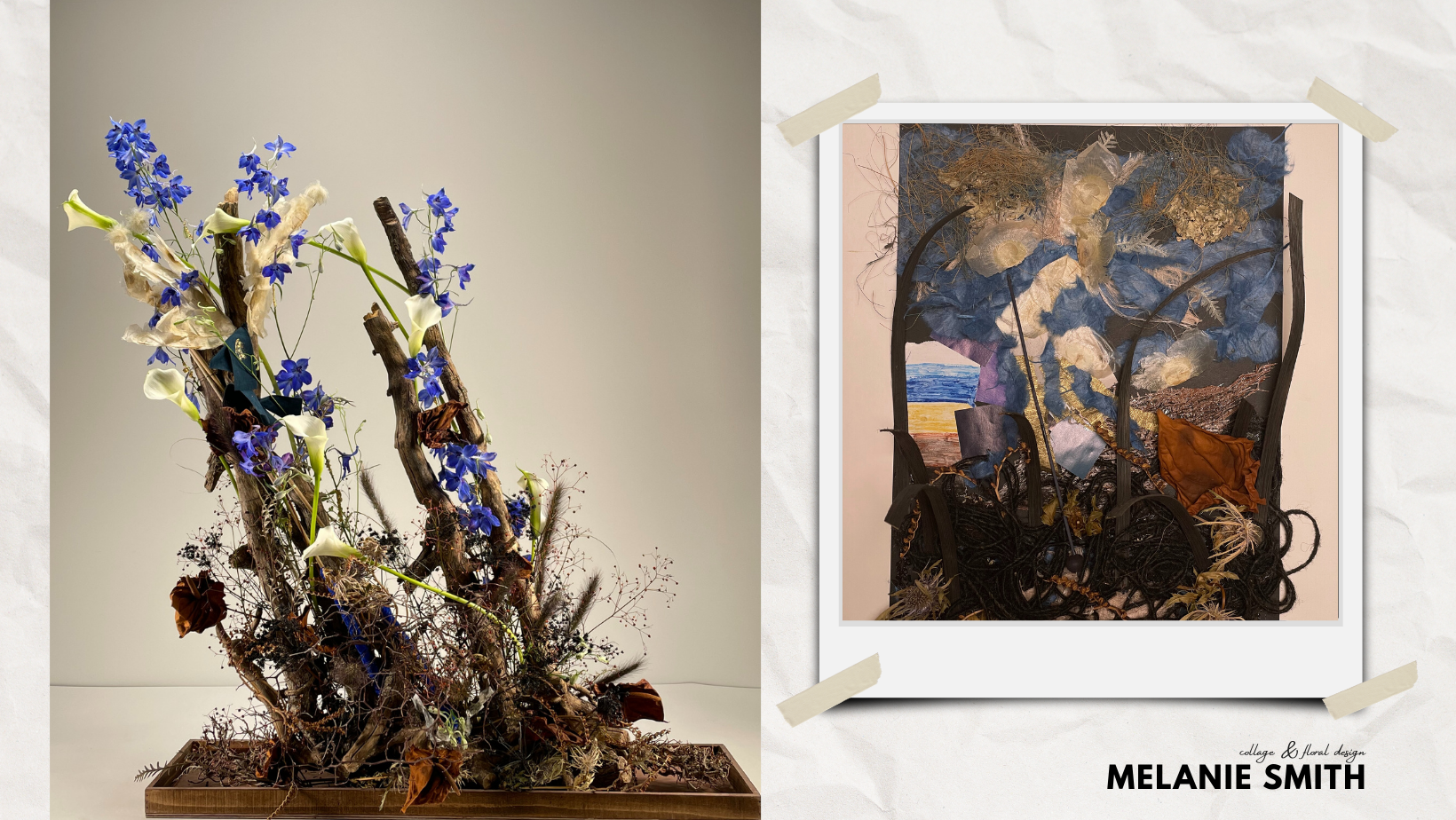
Collage as a learning tool in EMC
The collage, as far as the EMC Advance Class experience is concerned is much more than a form of expression in itself, it is a tool that enables students to reach their conscious creative potential, to truly dive in the design process starting from the outcome and revising backwards each step of it in order to ensure the desired final creation is achieved.
Moreover, the time invested in the realisation of the collage after experiencing the work of art in real life is an introspective activity that becomes personal, meaning the student achieves that state of mind where the consciousness of each particular element used allows them to also achieve a state of confidence in presenting their work during the examination. EMC is a floral educational program that focuses much more on the process of design, believing that the outcome never ceases to follow. Therefore, the need for our alumni to be confident in their work, to gain trust in their design capabilities and be able to attain the verbiage necessary to transmit that state of affirmation is strongly supported exercising the collage!
In order to see the creative spark within, one must clean the windows of perception. This is where education comes in place. A student should experience a steady growth towards the goal of reaching the knowledge to finally get to the stage of knowing how to communicate though the chosen medium, in this case, the flowers.
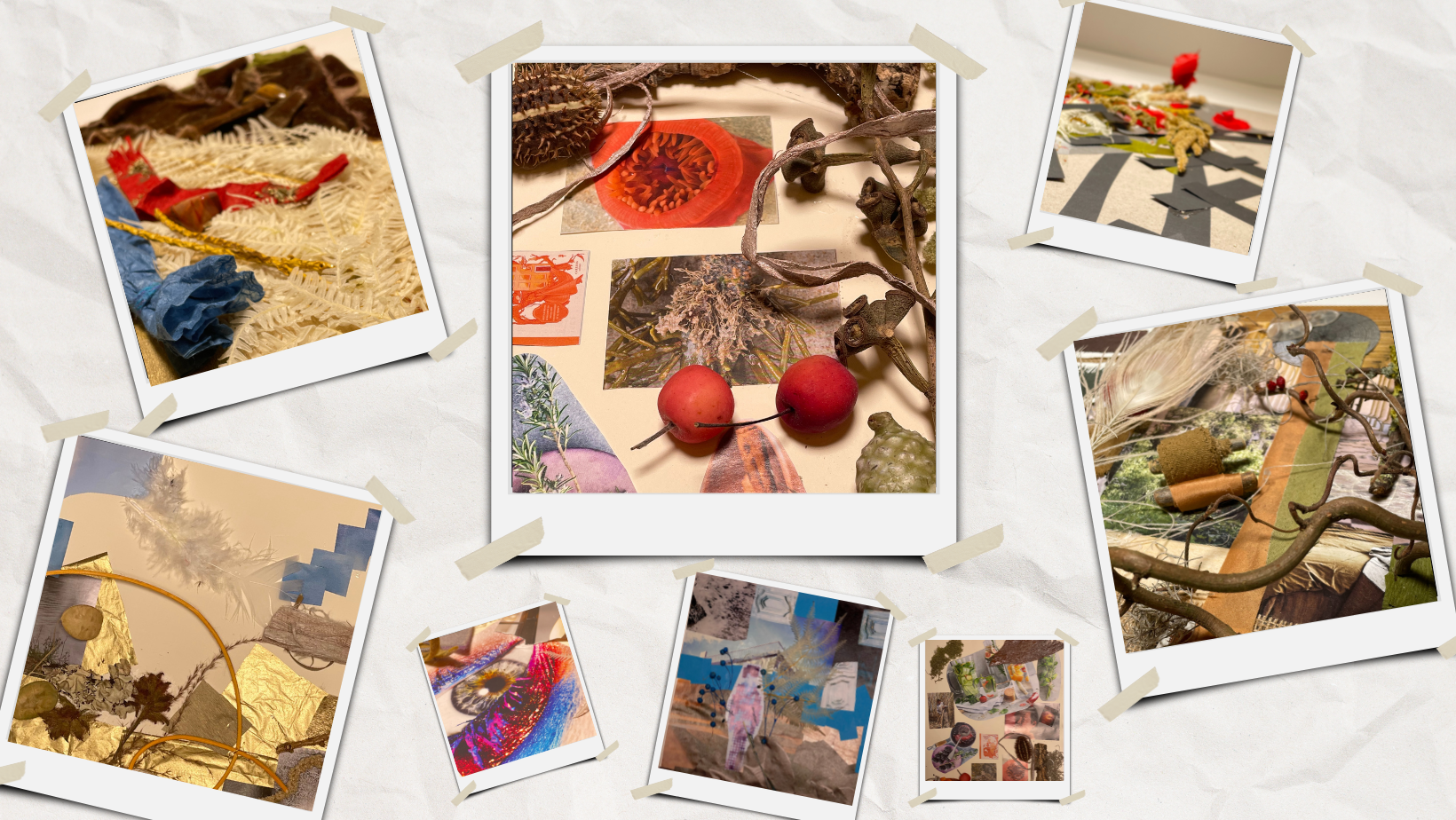
That is what designers are: communicators and that is the spirit they should educate themselves in, by learning and using tools available in other forms of art as well, which unequivocally are communication, as well. In EMC we talk about conscious learning, which is so much more than only taking in or capturing the information you get and we build up through the entire program that amazing experience of the Advanced Class, aiming for our students to reach not only their graduation moment, but, most importantly, the point where the infinite creative effect becomes part of their design process.
Don't miss a beat!
New blogs, course offerings and what we are up to delivered to your inbox!
We hate SPAM. We will never sell your information, for any reason.

